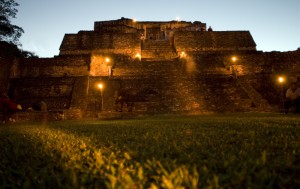
By Denise Mattia
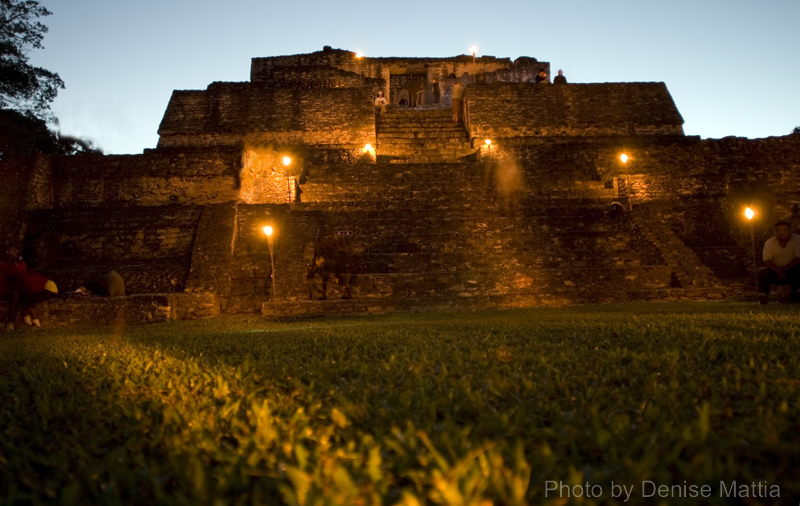
Dawn at Caracol. December 21, 2012
The beauty of Belize is the innumerable choices the country offers. Easy recreation is always an option, however, there are also hard-core jungle tours, sea- and river adventures and the Maya ruins to visit. Given about a week here, scuba enthusiasts generally sign up for diving and snorkeling and a trek to the ruins.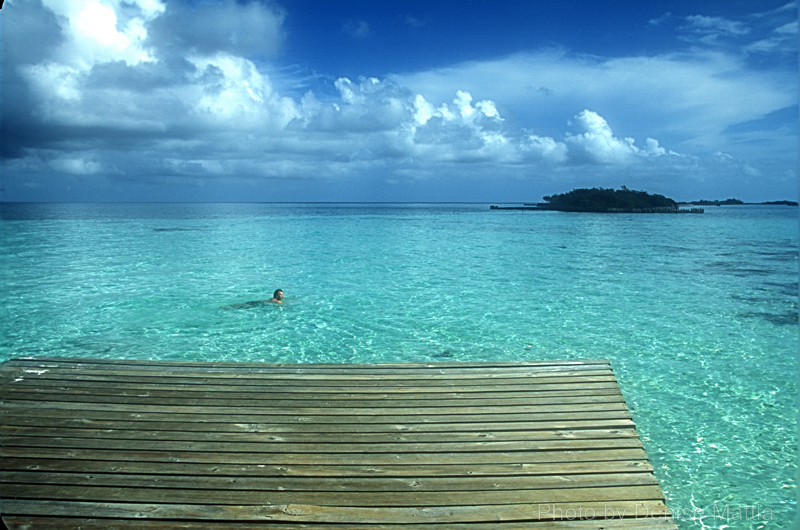
Belize faces the Caribbean Barrier Reef, the largest reef system in the Western Hemisphere. It parallels the coast in a dramatic series of vertical and sloping walls, some of which start shallow and plummet to 3,000 feet. Fringing reefs, sandbanks, shallow ridges, hundreds of cays, incomparable coral atolls and even a flooded sinkhole lie inside the underwater palisades. Without a doubt, the barrier reef is one of Nature’s wonders.
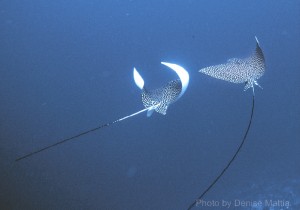
A pair of eagle rays swim into the distance
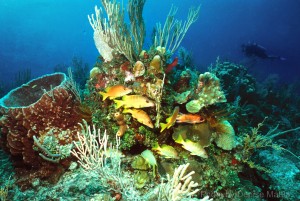
A school of red snappers hovers close to the reef
Many of the best sites start from 30 feet, with 60- to 120-foot visibility and virtually no current. It’s against marine park rules to anchor on the reef (Belize is a conservation-minded nation and has created parks and nature reserves on land and at sea); boat captains follow divers’ bubbles and pick them up when they surface.
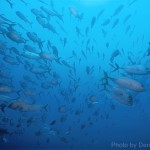
A school of tuna parts for divers
There are seldom other crafts around. 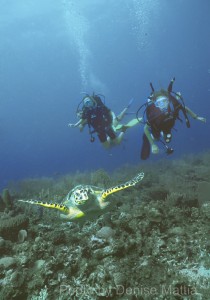 Divers’ splashes are likely to awaken turtles idling on the surface. Below the surface is a cornucopia of color. Spindly seawhips and branches of candelabra coral rise from dazzlingly coloured sponges and enormous brain corals. Bright yellow- and- black chevrons easily identify the sergeant majors. True-to-form soldierfish the colour of fire engines line up in a row under shallow overhangs, while yellow grunts with powder-blue stripes in a pattern that only Nature could contrive dart amid the garden of soft corals and craggy outcroppings. Water temperature registers in the 80s.
Divers’ splashes are likely to awaken turtles idling on the surface. Below the surface is a cornucopia of color. Spindly seawhips and branches of candelabra coral rise from dazzlingly coloured sponges and enormous brain corals. Bright yellow- and- black chevrons easily identify the sergeant majors. True-to-form soldierfish the colour of fire engines line up in a row under shallow overhangs, while yellow grunts with powder-blue stripes in a pattern that only Nature could contrive dart amid the garden of soft corals and craggy outcroppings. Water temperature registers in the 80s.
Invariably, divers float in awe above the tops of this brilliant world. Occasionally, eagle rays appear like silent shadows in the deep blue. Hawksbill turtles lift their heads and return to 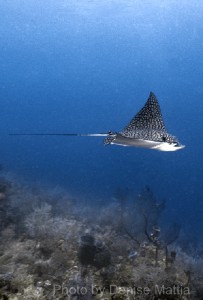 grazing on algae-coated skeletal coral, with more interest on food than on the divers. When mealtime is finished one might join a diver for a leisurely swim. Novice, intermediate and experienced divers have great fish stories to share.
grazing on algae-coated skeletal coral, with more interest on food than on the divers. When mealtime is finished one might join a diver for a leisurely swim. Novice, intermediate and experienced divers have great fish stories to share.
Some deeper dives start at about 75 feet, where there is almost always an eagle ray or two cruising along the reef. In addition to these strange and magic creatures, goliath groupers can be found sequestered in dugouts and narrow swimthroughs, while overhangs are the favorite quarters for eels, lobster and shrimp. Shimmering deepwater gorgonian fans, crowded outcroppings and large barrel sponges jut out in every direction. Endless schools of wrasses streak frantically over the length of the reef and then vanish. The wonders of the deep are only topped by the Mayan sites.
Battles at the “Stone Maiden,” the 19th century name of the ghost that inhabits the city-state of Xunantunich 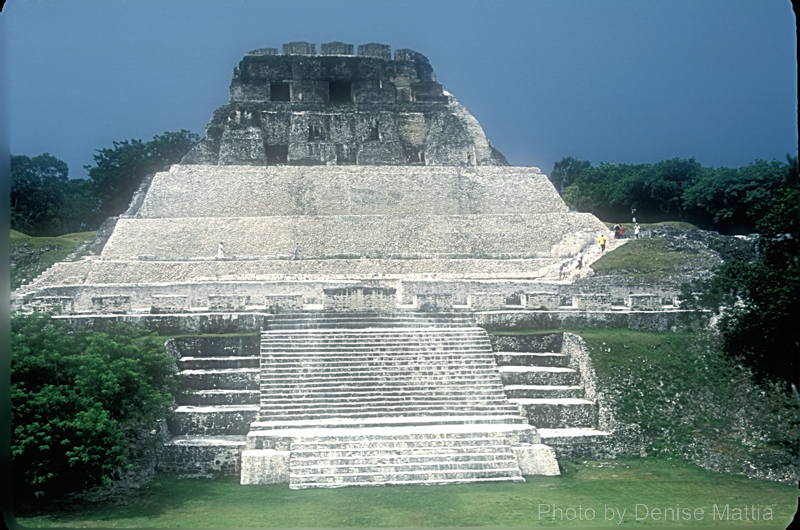 (pronounced su-nan-tu-neech), weren’t feigned, judging from the stone arrows found during excavation there. Of the 25 temples and palaces, the impressive Castillo rises 160 feet above the main plaza and is decorated with carved deities, including the subterranean or water god, Chak. Located northwest of Dangriga, near the Guatemalan border,Xunantunich is reported to have housed 200,000 inhabitants.
(pronounced su-nan-tu-neech), weren’t feigned, judging from the stone arrows found during excavation there. Of the 25 temples and palaces, the impressive Castillo rises 160 feet above the main plaza and is decorated with carved deities, including the subterranean or water god, Chak. Located northwest of Dangriga, near the Guatemalan border,Xunantunich is reported to have housed 200,000 inhabitants.
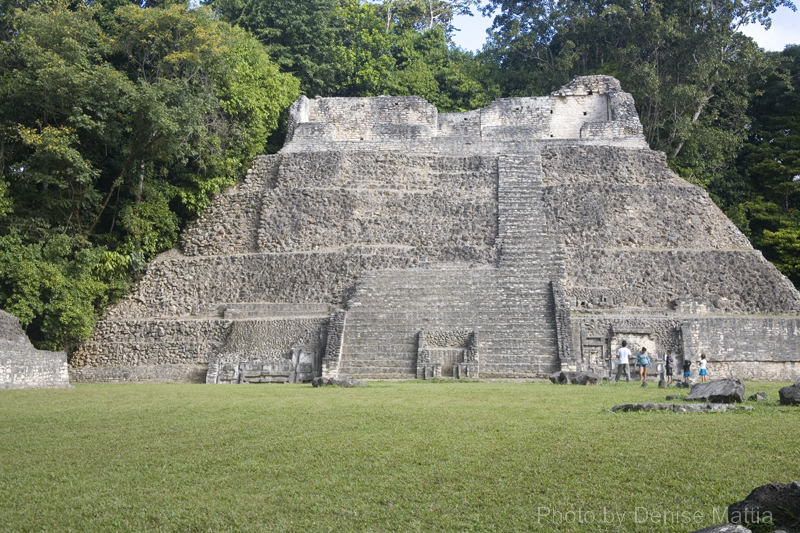
Caracol
The largest, most magnificent Mayan site in Belize lies south of San Ignacio deep in the heart of the jungle at an elevation of 1500 feet. Caracol (Snail in Spanish, Place of Three Hills loosely translated from Mayan glyphs) was inhabited from 600 B.C.E. to 900 A.D. The site remained underdeveloped until the 1980s, when Arlen and Diane Chase started the conservation project. To date, more than 80% of the inscriptions carved in slate and rock have been translated, giving scientists and archeologists insight to the world of the Maya. Located, Caana (sky-palace) in Caracol is the highest-known man-made structure in Belize. Camping at Caracol is managed by the National Institute of Culture and History (NICH) in Belize.
The organization in conjunction with the Belize Tourist Bureau permitted visitors to witness the rising sun on December 21, 2012. Dr. Jamie Awe, Director of Archaeology in Belize, who has conduct research projects in Caracol and in Belize, delivered a daytime informative tour at Caracol. He repeated his lecture during the evening meal. Plans to continue the overnight event for the Spring solstice are underway.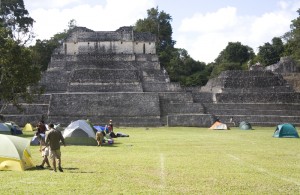
About Denise Mattia
A writer and photographer, Denise Mattia’s works are published nationally and internationally and include all aspects of leisure travel: art , culture, resorts, spas, food and wine and sports’ activities. She's the founder of the soon to be launched Yum-Yum-Traveler, a site devoted to reviewing restaurants in addition to her travel articles from around the world. She lives and works in Manhattan, where she was born.
- Web |
- More Posts (91)
